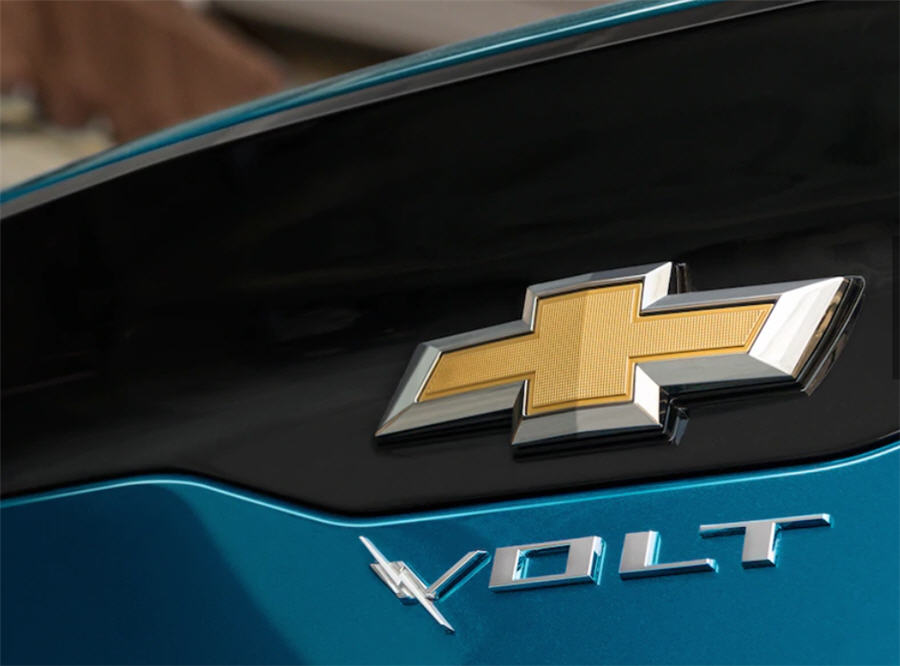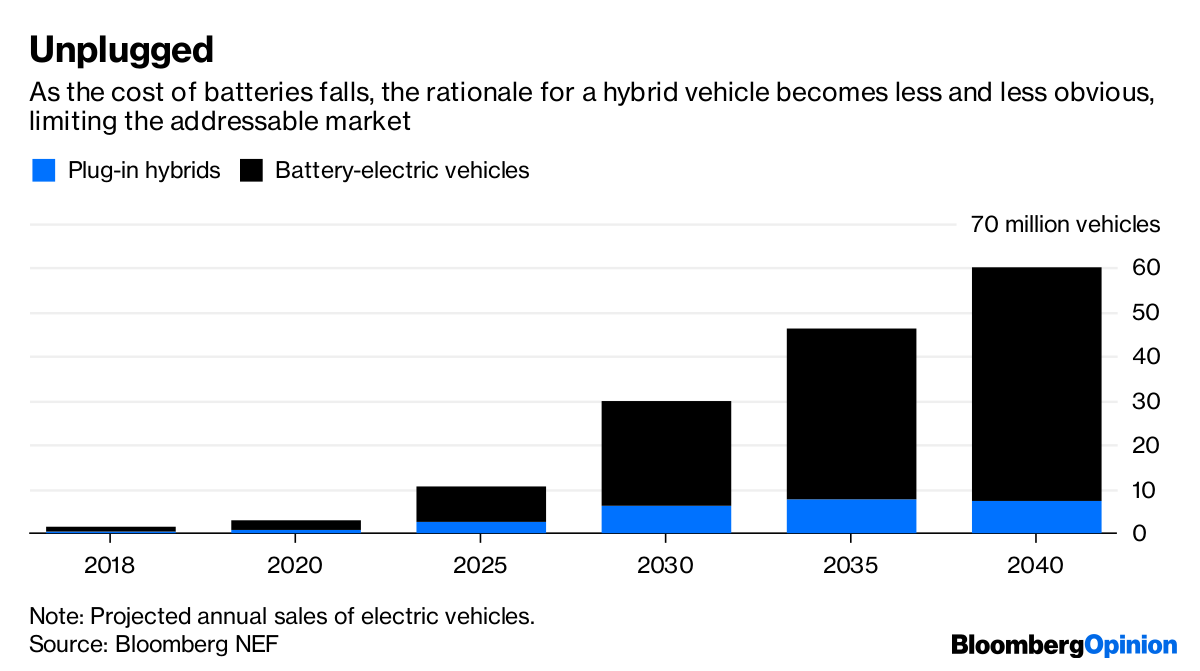GM unplugs the Volt, but EVs aren’t dead: Liam Denning

Farewell Chevy Volt, we hardly knew ye. General Motors Co.’s award-winning plug-in hybrid electric vehicle (PHEV), launched in 2010 as the company was emerging from bankruptcy, is one of the models being ditched as part of sweeping cutbacks GM announced Monday.
As one of the relatively few plug-in car options available in the U.S., and a symbol of GM’s shift toward new technologies, the Volt’s impending demise is a blow to proponents of vehicle electrification. Yet on the face of it, it seems like more of a ding than a total crash.
That makes the Volt, and others like it, a feat of engineering but also a halfway house; drivers pay more upfront (before subsidies) for just a partly electrified experience.
As the name implies, PHEVs are a compromise, twinning a regular drivetrain with an electric one to offer zero-tailpipe emissions for relatively short distances and the comfort of having a traditional engine kick in for longer journeys.
This makes the long-term future of PHEVs vulnerable on three fronts:
As tax credits roll off or get cut, the premium of PHEV sticker prices over traditional vehicles widens. If oil prices fall, then the cost savings on fueling — an important offset to the sticker price — shrink. As battery costs continue to fall, and charging infrastructure gets built, fully electric vehicles become the more obvious choice in many markets.
The first is an impending reality in the U.S. — barring any legislative changes — and already the case in important growth markets such as China and India, where subsidies for PHEVs are smaller than for many fully electric vehicles. The second is a chronic issue that happens to be on full display amid the recent slide in oil prices.
The third is the biggest issue for the long term. As and when battery costs fall low enough, their range and price would become comparable to those of traditional vehicles. At that point, the market for a car combining both drivetrains ought to become quite niche indeed. “Plug-in hybrids are not dead, but pure electrics are grabbing a much larger share of the plug-in market as the technology improves and costs fall,” says Colin McKerracher, who manages transport-sector coverage for Bloomberg NEF. Their long-range forecasts for electric vehicle adoption implied a limited role for PHEVs anyway, well before the latest news about the Volt:
Of course, the key variable in those projections is how quickly the range of fully electric vehicles expands and, linked with this, how rapidly the price declines. On that front, GM’s intention to “prioritize future vehicle investments in its next-generation battery-electric architectures” offers some encouragement that the end of the Volt may mark an acceleration away from PHEVs but not electrification altogether. Indeed, given the central role EVs have played in CEO Mary Barra’s messaging and investment strategy, abandoning them would be a U-turn of monumental proportions.

If there is a broader takeaway from GM’s shift, it is that vehicle electrification’s future is tied more to what happens in places like China than the U.S. The Volt’s demise reflects GM favoring higher-margin trucks and gutting its car offering in the U.S., mirroring the rest of Detroit in what looks like an ever-uglier automotive market. Protecting profitability in that way is popular with investors, judging by the stock bounce on Monday, and should also protect funding for continuing investment in electrification. Still, along with efforts at the federal level to make tailpipes great again, it all reinforces the sense that, Tesla Inc. aside, America just isn’t where it’s at when it comes to electric vehicles.
(By Liam Denning)
{{ commodity.name }}
{{ post.title }}
{{ post.date }}

Comments